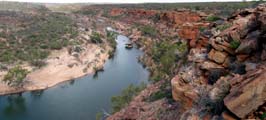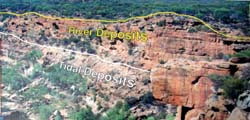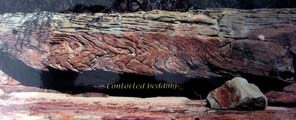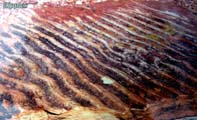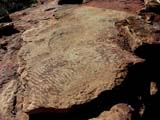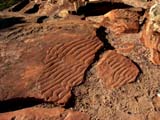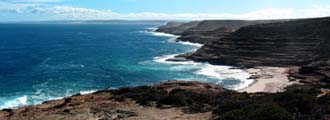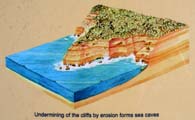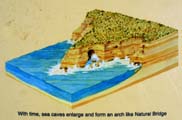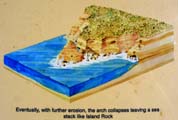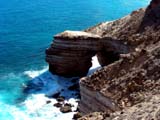The Formation of the Kalbarri National Park |
The Murchison GorgeThe meandering, water-sculptured Murchison Gorge is a very young feature compared with the ancient rocks that cover much of Kalbarri National Park. The red and white-banded layers of the Tumblagooda Sandstone were deposited by
rivers and on tidal sandflats between 450 and 480 million years ago, a time when
life was just venturing onto land. Fossilized burrows created by worm-like animals are found throughout the rocks. Around 130 million years ago, the ancestral Murchison River
began to cut down through the Tumblagooda Sandstone, creating
a broad and gentle valley in its wake - the same valley that
one drives through to visit most lookouts. Over 2'500 million years ago, this
was the sea floor. The CoastThe steep cliffs of layered rocks that rise from the sea
are made of 480 million-year old Tumblagooda Sandstone. Structures like the Natural Bridge are formed by the wave
action eroding the softer layers of rock ultimately undermine
the cliffs. |
|
No liability for timeliness, integrity and correctness of this document is accepted. |
| |
